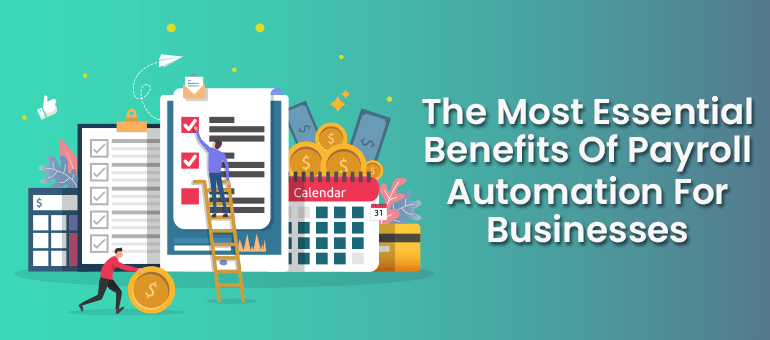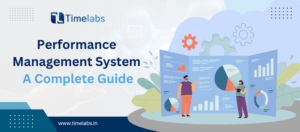The widespread use of automation in various fields has been around for some time and has significantly contributed to improving people’s daily lives. Since the beginning of the industrial revolution, humans have freed themselves from tedious, repetitive work by inventing and mass-producing computer programs that carry out these activities for them. Nowadays, most human tasks can be automated, from keeping our homes and businesses safe to setting reminders and doing tasks like conference scheduling or payroll processing.
When payroll is automated, HR departments gain valuable time that can be used toward other objectives, like increasing employee engagement. This results in a win-win situation for both the company and its employees.
Payroll Automation: Overview
“payroll automation” refers to using automation tools to streamline payroll administration services like income tax returns, salary and paycheck transfers, recordkeeping, etc., to maximize efficiency and minimize the time spent on mundane, repetitive operations. By automating repetitive tasks associated with payroll management, HR and accounting professionals are freed up to focus on the most critical strategic issues affecting their organizations.
Advantages of an Automatic Payroll System
1. Track Working Hours Easily
There was a time when managers and supervisors would walk the floor of the factory or office regularly to check on workers and give them instructions. Observing them, we can tell that keeping track of employees’ time and attendance at work is a major challenge for the supervisors and managers in charge. Slowly but surely, as the business expands, so does its staff. Keeping tabs on everyone’s time at work is tedious, time-consuming, and chaotic. Automatic payroll software would make this a breeze to manage.
The automated system can keep track of employees’ time on the job by recording information such as when they logged in and out and when they took breaks. As a result, the manager and supervisor will have more time to devote to strategic planning.
2. Modify The Pay Scale As Required
Payroll solutions that are automated provide a lot more value to businesses. The standard way of payrolling employees places less emphasis on individual performance and the firm’s worth as a whole. Payroll automation solutions help upper management establish competitive pay rates for its employees. Management may make necessary adjustments to the pay system quickly and easily thanks to this method. This facilitates the detection and resolution of abnormalities in the compensation offered to workers.
3. Simple Salary Calculation
Payroll calculation is a sophisticated and time-consuming manual operation. The HR department must collect information from several sources and perform complex computations. It takes a lot of time to compare and compute data manually while making a spreadsheet. Many HR problems can be easily and swiftly resolved with the help of software designed for that purpose.
Simply input the relevant data into the system, and the application will automatically determine variables like basic wage, benefits packages, deductions, additional hours, etc. Furthermore, it computes and displays accurate payroll information, ensuring the HR department runs smoothly and efficiently.
4. Generate Pay Slips Quickly and Easily
The tedious and time-consuming process of creating pay slips using conventional methods is a major source of frustration for HR professionals. Having to alter the pay slip in any way adds a layer of complexity. Since the HR department thoroughly reviewed all relevant information before generating the pay slip, making any adjustments would require them to start from scratch.
Payroll system automation makes it possible to eliminate unnecessary effort and headaches. The automated software will immediately generate the appropriate salutations and modifications when all the information is compiled. Accurate results are provided by thoroughly automated computations, which would make creating pay slips a quick, easy, and error-free operation.
5. Manage Your Compensation Expenses
Payroll system automation made it simple for the HR department to access data from the company’s internal and external sources. The HR department now has a tool to easily develop, launch, and document customized payroll models in line with business requirements and under the allotted spending cap. The payroll process will become more streamlined, and the company’s compensation costs will be easier to manage.
As a result of advancements in compensation models, HR can now more effectively manage payroll system costs, and it will help payroll strategies become more organized and efficient.
6. Strategic Tax Planning
Everyone wants a quick and painless way to complete their tax obligations. Before a company can generate a pay slip, this is one of the most complicated issues it must overcome. It’s not straightforward to incorporate taxing aspects into the payroll system because of all the factors that must be considered.
Automated payroll systems greatly simplify some of the most time-consuming and challenging aspects of calculating taxes. The software ensures data security, reduces the likelihood of mistakes, and prevents data theft. In addition, it keeps employees informed of the company’s payroll practices, contributing to their overall job satisfaction.
Bottomline
Today’s payroll automation software has the potential to completely revamp your payroll operation and do away with all the hassles formerly connected with doing it manually. Incorporating workforce management software into your operations allows for more streamlined administration of your employees and payroll records, boosting productivity and profits.



